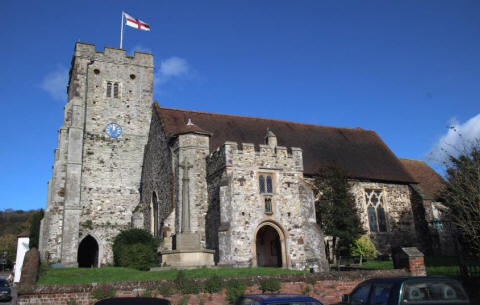St. George's
is a generously proportioned late 13th century church with a 15th
century tower and porch. It is
a Grade I listed building. The
Church dominates the village square at the centre of Wrotham, a village of
just under 800 households and some 2,500 inhabitants, lying on the Pilgrims Way.
St. George’s
is the only place of worship in the village.
It is the second church to be built on the site – the first dating
back to the middle of the 10th century - and has always been
dedicated to St George, which was relatively rare at the time of its
consecration.
The Tower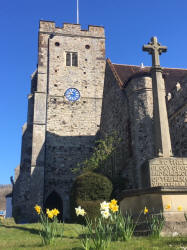
The 15th century tower appears to dominate the whole village, rising as it
does almost directly from the road.
The tower has angled buttresses and a NE stair turret. It has a
passage through the base of the tower, unique to
Kent
and relatively rare in
England, with three bay rib vaulting.
The passage was probably made to allow the annual
Corpus Christi procession around the Church without
needing to go outside consecrated ground, as the tower forms part of the
western boundary of the churchyard.
On the west side of the passage there is a large piece of sandstone
with curious marks. These were
probably made by archers sharpening their arrows on the stone on their way
to the butts for archery practice.
Alternatively they may be remnants of crosses which were often
incised on external walls or perhaps wear from pilgrims marking what might
have been a holy stone with the sign of the cross.
The Bells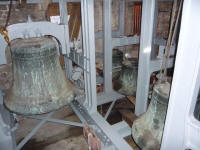
The peal of eight bells is reputed to be one of the best in Kent.
The number at one time was six, but increased to eight in the mid 18th
century.
It is recorded that at
a Vestry meeting in 1754, when repairs were being made to the tower, that
"the six bells be taken down and carried to some foundry or other proper
place and there melted down or cast into a complete peal of eight, with such
additions of new metal as may be required.” These eight were again recast in
time for the coronation of King George V in 1911.
The Clock & Carillon
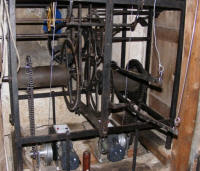
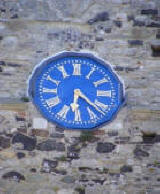 The
conservation report from the Cumbria Clock Company says that the clock
"said to be manufactured circa 1614, could possibely be by one of the
apprentices of the very important clockmaker, Leonard Tennant of
London."
It is still in
excellent mechanical order.
The
conservation report from the Cumbria Clock Company says that the clock
"said to be manufactured circa 1614, could possibely be by one of the
apprentices of the very important clockmaker, Leonard Tennant of
London."
It is still in
excellent mechanical order.
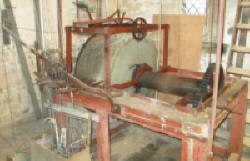
It
has a carillon (repeater) and is capable of playing one of five selectable
tunes at selected hours. The
tunes were originally all hymns but in 1754 a popular song of the time "The
Captain with his whiskers, took a sly glance at
me." was substituted for one of the hymns.
In 1968 the clock winding mechanism was "improved" so that it could
be wound by electric motors rather than hand winding which had to be carried
out daily. This was done
without making any alteration to the clock mechanism.

 The
conservation report from the Cumbria Clock Company says that the clock
"said to be manufactured circa 1614, could possibely be by one of the
apprentices of the very important clockmaker, Leonard Tennant of
London."
It is still in
excellent mechanical order.
The
conservation report from the Cumbria Clock Company says that the clock
"said to be manufactured circa 1614, could possibely be by one of the
apprentices of the very important clockmaker, Leonard Tennant of
London."
It is still in
excellent mechanical order.